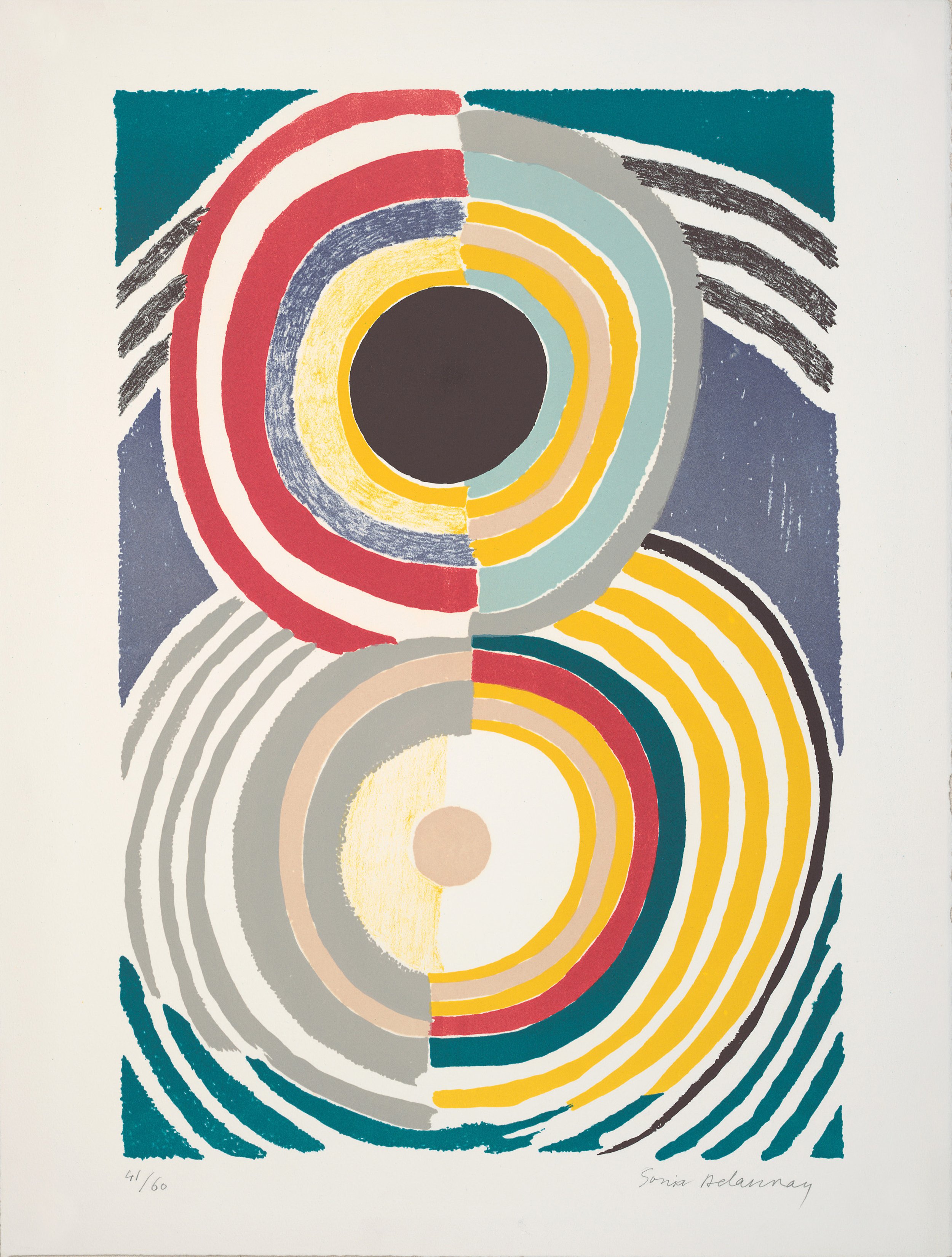



Your Custom Text Here
Sonia Delaunay’s innovative explorations of color and form began with a quilt she made for her son in 1911 that would spur a breakthrough in the history of abstraction. She had moved from Moscow to Paris at age 20, where she first encountered Post-Impressionism and Fauvism, inspiring her to push further toward non-objective art. Along with her husband, Robert Delaunay, she developed a bright blend of Cubism and Futurism that would be dubbed Orphism by critic Guillaume Apollinaire in 1910—though Delaunay preferred the term “Simultaneous Contrasts”. In addition to painting, she created textiles as “exercises in color,” under the Maison Delaunay label, even creating costumes for Sergei Diaghilev’s Ballets Russes. In 1964, Delaunay became the first living woman to be given a retrospective at the Louvre.
Sonia Delaunay’s innovative explorations of color and form began with a quilt she made for her son in 1911 that would spur a breakthrough in the history of abstraction. She had moved from Moscow to Paris at age 20, where she first encountered Post-Impressionism and Fauvism, inspiring her to push further toward non-objective art. Along with her husband, Robert Delaunay, she developed a bright blend of Cubism and Futurism that would be dubbed Orphism by critic Guillaume Apollinaire in 1910—though Delaunay preferred the term “Simultaneous Contrasts”. In addition to painting, she created textiles as “exercises in color,” under the Maison Delaunay label, even creating costumes for Sergei Diaghilev’s Ballets Russes. In 1964, Delaunay became the first living woman to be given a retrospective at the Louvre.
Untitled I &II (from La Terra Impareggiabile)
1970
Color etchings
15 × 11 inches (each sheet)
Edition of 135
Signed, dated and numbered in pencil
SOLD
Syncope
1972
Color lithograph on wove paper
29.75 x 22.25 inches
Edition of 75
Signed, dated and numbered in pencil
SOLD
Cible
c. 1969
Lithograph on wove paper
23.75 x 18.75 inches
Edition of 60
Signed and numbered in pencil
SOLD
Icone
1970
Lithograph on BFK Rives paper
30.25 x 21 inches
Edition of 75
Signed and numbered in pencil
SOLD